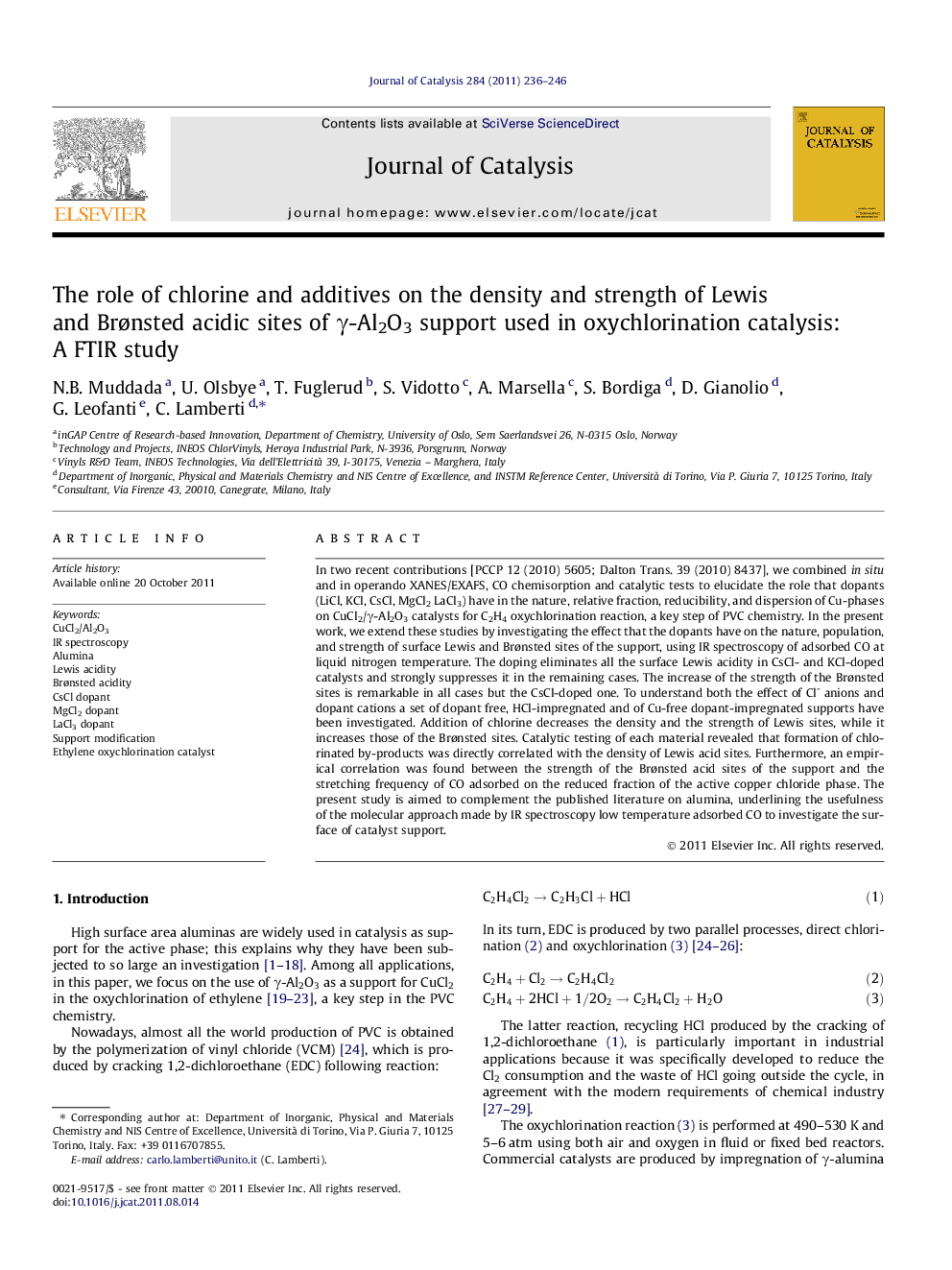| کد مقاله | کد نشریه | سال انتشار | مقاله انگلیسی | نسخه تمام متن |
|---|---|---|---|---|
| 61567 | 47588 | 2011 | 11 صفحه PDF | دانلود رایگان |

In two recent contributions [PCCP 12 (2010) 5605; Dalton Trans. 39 (2010) 8437], we combined in situ and in operando XANES/EXAFS, CO chemisorption and catalytic tests to elucidate the role that dopants (LiCl, KCl, CsCl, MgCl2 LaCl3) have in the nature, relative fraction, reducibility, and dispersion of Cu-phases on CuCl2/γ-Al2O3 catalysts for C2H4 oxychlorination reaction, a key step of PVC chemistry. In the present work, we extend these studies by investigating the effect that the dopants have on the nature, population, and strength of surface Lewis and Brønsted sites of the support, using IR spectroscopy of adsorbed CO at liquid nitrogen temperature. The doping eliminates all the surface Lewis acidity in CsCl- and KCl-doped catalysts and strongly suppresses it in the remaining cases. The increase of the strength of the Brønsted sites is remarkable in all cases but the CsCl-doped one. To understand both the effect of Cl- anions and dopant cations a set of dopant free, HCl-impregnated and of Cu-free dopant-impregnated supports have been investigated. Addition of chlorine decreases the density and the strength of Lewis sites, while it increases those of the Brønsted sites. Catalytic testing of each material revealed that formation of chlorinated by-products was directly correlated with the density of Lewis acid sites. Furthermore, an empirical correlation was found between the strength of the Brønsted acid sites of the support and the stretching frequency of CO adsorbed on the reduced fraction of the active copper chloride phase. The present study is aimed to complement the published literature on alumina, underlining the usefulness of the molecular approach made by IR spectroscopy low temperature adsorbed CO to investigate the surface of catalyst support.
IR spectroscopy of adsorbed CO highlights that additives like MgCl2, KCl, etc., used in industrial CuCl2/Al2O3 catalysts for C2H4 oxychlorination, significantly modifies both the Lewis and the Brønsted acidity of the support, that in turns influences the electronic configuration of the active CuCl2 phase.Figure optionsDownload high-quality image (182 K)Download as PowerPoint slideHighlights
► Role of Cl and activation T on population and strength of Brønsted/Lewis sites @ γ-Al2O3.
► Role of dopant chlorides on population and strength of Brønsted/Lewis sites @ γ-Al2O3.
► Role of the support acidity on the electronic properties of the CuCl2 active phase.
► Correlation between Lewis sites strength/population and catalyst selectivity.
Journal: Journal of Catalysis - Volume 284, Issue 2, 1 December 2011, Pages 236–246